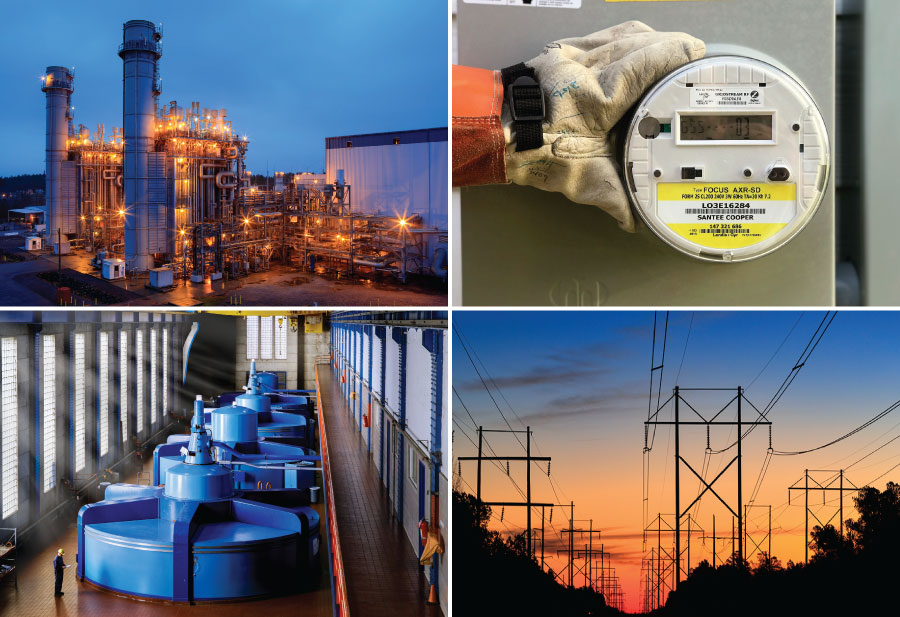Report on the Sangtuda-2 Hydropower Agreement and its Alignment with Sustainable Development Goals
Executive Summary
An amended agreement between Tajikistan and Iran concerning the Sangtuda-2 hydroelectric power plant has been ratified, extending the operational management by Iran until the end of 2032. This extension facilitates the full recovery of Iran’s initial investment and resolves a significant outstanding debt. The agreement is a critical step in strengthening bilateral cooperation and advancing several key Sustainable Development Goals (SDGs), particularly those related to clean energy, infrastructure, and international partnerships.
Financial Restructuring and Project Details
The resolution addresses financial discrepancies that have accumulated since the plant’s commissioning. The new terms provide a clear path to financial solvency and eventual state ownership.
- Total Project Cost: $256 million
- Iranian Government Contribution: $180 million
- Sangob Investment: $36 million
- Tajik Government Contribution: $40 million
- Revenue Discrepancy (2012-2023): While Barki Tochik purchased 8.9 billion kWh of electricity valued at $451.5 million, the plant received only $122.5 million (27%).
- Debt Resolution: The new agreement writes off Tajikistan’s outstanding debt of $329 million to the Sangtuda-2 facility.
- Future Payments: A new payment schedule is established for the extended six-year, four-month period to ensure full investment recovery.
Amended Operational Timeline and Ownership Transfer
The revised agreement, signed on May 29, 2025, and subsequently ratified, establishes a new timeline for the transfer of this key energy asset.
- Construction on the plant, located on the Vakhsh River, began in 2006 as a major joint energy project.
- The initial agreement projected the transfer of ownership to Tajikistan by August 2026.
- The amended agreement extends Iranian management for an additional six years and four months to facilitate investment recovery.
- At the conclusion of this period, by the end of 2032, full control and ownership of the Sangtuda-2 plant will be transferred to Tajikistan’s state-owned utility, Barki Tochik.
Contribution to Sustainable Development Goals (SDGs)
This bilateral agreement significantly supports Tajikistan’s commitment to the UN Sustainable Development Goals.
- SDG 7 (Affordable and Clean Energy): The agreement ensures the continued, stable operation of a major hydroelectric facility, reinforcing the supply of clean, renewable energy to the national grid and promoting energy security.
- SDG 9 (Industry, Innovation, and Infrastructure): By guaranteeing the long-term viability and eventual national ownership of the Sangtuda-2 plant, the agreement strengthens resilient and sustainable national infrastructure, which is fundamental for industrial and economic development.
- SDG 17 (Partnerships for the Goals): The successful renegotiation serves as a model for international cooperation. It demonstrates a commitment by both Tajikistan and Iran to maintain a strong partnership to achieve shared goals in sustainable energy and economic stability.
- SDG 13 (Climate Action): As a key component of the Vakhsh cascade of hydroelectric stations, the plant’s uninterrupted operation contributes directly to climate change mitigation by providing a significant source of low-carbon power and reducing reliance on fossil fuels.
- SDG 8 (Decent Work and Economic Growth): The resolution of a $329 million debt and the establishment of a stable operational framework for a major national asset contribute to macroeconomic stability, fostering an environment conducive to sustained economic growth.
SDGs Addressed or Connected
Detailed Explanation
-
SDG 7: Affordable and Clean Energy
The article focuses on the Sangtuda-2 hydroelectric power plant. Hydropower is a form of clean and renewable energy. The project directly contributes to increasing the availability of electricity in Tajikistan, thus addressing the goal of ensuring access to affordable, reliable, sustainable, and modern energy.
-
SDG 9: Industry, Innovation and Infrastructure
The construction and operation of the Sangtuda-2 plant, described as one of the “largest joint energy projects between Tajikistan and Iran,” represents a significant development of critical national infrastructure. This infrastructure is essential for supporting economic development and improving the quality of life in the region.
-
SDG 17: Partnerships for the Goals
The entire project is founded on a bilateral partnership between Tajikistan and Iran. The article details the financial agreements, investment contributions ($180 million from the Iranian government, $40 million from the Tajik government), and negotiations between the two nations, highlighting international cooperation to achieve a common development goal.
Specific Targets Identified
Detailed Explanation
-
Target 7.2: By 2030, increase substantially the share of renewable energy in the global energy mix.
The Sangtuda-2 plant is a hydroelectric facility, which generates renewable energy. Its operation, which began with its first unit in 2011 and has produced 8.9 billion kilowatt-hours of electricity, directly increases the share of renewable energy in Tajikistan’s energy supply.
-
Target 7.a: By 2030, enhance international cooperation to facilitate access to clean energy research and technology… and promote investment in energy infrastructure and clean energy technology.
The project is a clear example of this target in action. It is a joint venture between Tajikistan and Iran, with Iran providing a significant investment of $180 million for the construction of clean energy infrastructure (the hydroelectric plant) in Tajikistan.
-
Target 9.1: Develop quality, reliable, sustainable and resilient infrastructure… to support economic development and human well-being.
The Sangtuda-2 plant, located on the Vakhsh River, is a major piece of energy infrastructure designed to provide a reliable source of electricity for Tajikistan, thereby supporting the country’s economic activities and the well-being of its citizens.
-
Target 17.3: Mobilize additional financial resources for developing countries from multiple sources.
The article explicitly states that the project was financed through multiple sources, with the Iranian government contributing $180 million and the Iranian company Sangob investing $36 million. This represents a significant mobilization of foreign financial resources for an infrastructure project in Tajikistan.
Indicators Mentioned or Implied
Detailed Explanation
-
Implied Indicator for Target 7.2: Amount of renewable energy produced.
While not presented as a formal indicator, the article provides a key data point for measuring progress: the plant produced 8.9 billion kilowatt-hours of electricity between 2012 and the end of 2023. This figure directly quantifies the output of a renewable energy source.
-
Indicator 7.a.1: International financial flows to developing countries in support of clean energy… and renewable energy production.
The article provides precise figures for these financial flows. The Iranian government’s contribution of $180 million and Sangob’s investment of $36 million are direct measures of international financial support for renewable energy production in Tajikistan.
-
Implied Indicator for Target 9.1: Total investment in infrastructure.
The total construction cost of the plant, stated as $256 million, serves as a direct monetary indicator of the investment made in developing new, sustainable energy infrastructure.
Summary Table of SDGs, Targets, and Indicators
| SDGs | Targets | Indicators |
|---|---|---|
| SDG 7: Affordable and Clean Energy |
7.2: Increase the share of renewable energy.
7.a: Enhance international cooperation and investment in clean energy infrastructure. |
– Amount of renewable energy produced (8.9 billion kWh since 2012).
– International financial flows for clean energy ($180 million from Iranian government, $36 million from Sangob). |
| SDG 9: Industry, Innovation and Infrastructure | 9.1: Develop quality, reliable, and sustainable infrastructure. | – Total investment in infrastructure ($256 million total construction cost). |
| SDG 17: Partnerships for the Goals | 17.3: Mobilize additional financial resources for developing countries. | – Foreign investment mobilized for the project ($216 million total from Iranian sources). |
Source: timesca.com







